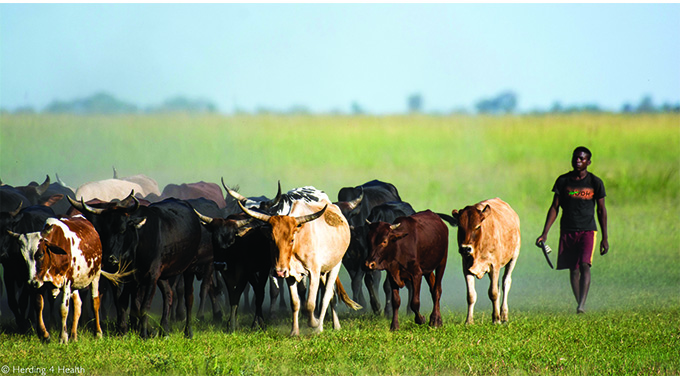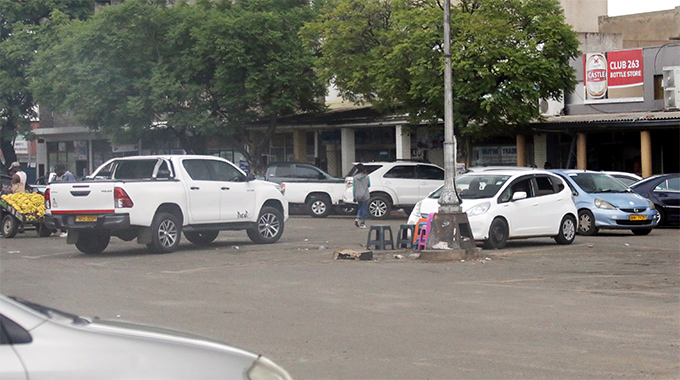January Disease hotspots quarantined

Sukulwenkosi Dube-Matutu, [email protected]
THE Department of Veterinary Services has quarantined Insiza, Bulilima, and Umzingwane districts in Matabeleland South Province as the Government intensifies measures to contain the spread of the January Disease, also known as Theileriosis, which has killed close to 700 cattle since the beginning of the year.
The three districts have become hotspots of the deadly livestock disease following its spread from Insiza, where it was first detected early this year.
According to official reports, the major hotspots are PBS Farm, Bayethe, Bradford Farm, and Amazon area in Insiza, Willbies and Godlwayo area in Umzingwane, as well as Orap Zenzele Farm near Figtree in Bulilima.
The disease is a serious threat to the province’s economy as the affected areas are part of the prime livestock-producing zones in a region where the livestock value chain is a major economic activity.
Livestock production in Zimbabwe is an important source of income and a safety net for millions of people, particularly rural women, and youth, and is a significant contributor to the agricultural economy.
This has resulted in 580 cattle deaths in Insiza alone, 102 in Umzingwane, and 23 in Bulilima, prompting the Government to take swift interventions, including scaling up awareness programmes among farmers in order to save the national herd.
Theileriosis was first reported in PBS Farm this year and left several families counting losses.
In an interview, Matabeleland South provincial veterinary director, Dr Enat Mdlongwa, said the department was on top of the situation as the cattle mortality numbers were dropping when compared to the beginning of the year.
This is consistent with the Government’s Livestock Growth Plan, which seeks to grow the livestock sector to a US$1,9 billion economy by 2025.
Dr Mdlongwa said intense surveillance measures were being taken so that the disease does not spread to other areas. Dr Mdlongwa urged farmers to be vigilant and play their part in order to protect their animals and contain the spread of the disease.
“The January Disease mortality from January to July 2023 is sitting at 703 animals. 580 cattle have succumbed in Insiza, 102 in Umzingwane, and 23 succumbed to the disease in Bulilima about two weeks back,” he told Chronicle.
“The hotspot areas have been placed under quarantine. While the number of animals that are dying has dropped, we are concerned that the disease has spread into two other districts.
“The disease was first recorded in Insiza and we suspect that animals were moved into Umzingwane, which led to the spread of the disease.
“Of late we suspect that animals were moved to Orap Zenzele Farm near Figtree in Bulilima, which led to the further spread of the disease.”
Dr Mdlongwa said his team was working closely with affected communities to intensify awareness campaigns to ensure enhanced collaboration to combat the diseases.
He implored farmers to adhere to the quarantine orders, which are critical in protecting their animals, and advised those with affected cattle to seek proper treatment. Dr Mdlongwa also urged traditional leaders to assist farmers by enforcing quarantine regulations while calling upon farmers to report any suspicious cases and watch each other to avoid potential losses.
He further directed farmers to ensure they kraal their animals every night and pledged that more interventions will be devised to enforce proper dipping with routine checks to ensure compliance and keeping of records.
This will require farmers to be more transparent when dipping their animals by ensuring that all the beasts were brought in for dipping as those that may remain pose risks to the entire herd, Dr Mdlongwa added.
“If we pull against this Government programme we will be left behind. Every animal from today onwards will be expected to be kraaled. Each farmer has to ensure that they check on their animals every morning in order to identify any outbreaks as early as possible,” he said.
“There is a need for early detection of disease and early initiation of treatment. If you identify the disease early it can be contained but if it’s detected late the animal can die.
“For animals that have the disease, make sure that you nurse them up until they recover. Put the animal in a kraal and feed it. If we neglect our responsibility as farmers then we will lose our animals.”
Cognisant of the fact that the livestock sector has to be run as a business to ensure that it makes a significant contribution to Zimbabwe’s socio-economic growth, the Government has crafted a number of national blueprints, namely, the NDS1, the Agriculture and Food Systems Transformation Strategy and the Livestock Growth Plan (2020-2025).
Key strategies of the Livestock Growth Plan entail the following components: improvement in animal nutrition; genetics improvement; improvement in animal health; climate change adaptation and small stock production; development of markets and trade infrastructure; and resource mobilisation. — @DubeMatutu











Comments